#AusGLAMBlog
Explore tagged Tumblr posts
Text
The birth of a horror fan
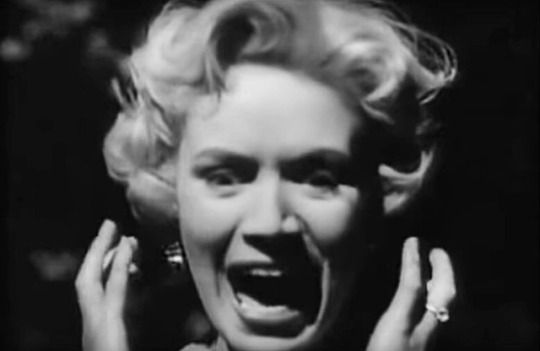
Still of Veronica Hurst as Kitty Murray in The Maze, 1953
I’ve watched 36 horror films in 26 days! For those that know me, this is a lot. For the first time I’m taking party in 31 days of horror. It’s not over yet, I have more horror films to see before the end of October. Viewing this many horror films in less than a month is a record for me!
I never thought I would call myself a horror fan. In the past I would occasionally watch horror films, usually hiding under blankets or peaking through fingers.
Why do some horror films scare me more than others? Is it imagination, sensitivity, suggestibility, tension, violence?
I’ve approached 31 days of horror with a clear plan to watch horror films released between 1900 and 1959. The films I’ve watched are rare, classics, beautifully crafted stories, and the images stay with you.
I’ve noted some interesting recurring themes and plot devices such as newspaper headlines; supposedly dead bodies sitting upright in the morgue; religious figures fighting evil; ‘What a strange man’ is often said; scientists meddling with nature features; cats hissing as a warning (take heed!); Scotland Yard is useless in dark times.
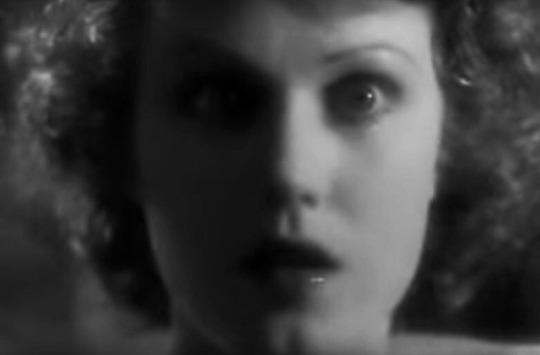
Still of Fay Wray as Eve Trowbridge in The Most Dangerous Game, 1932
I’m now a fan of the original Scream Queen, Fay Wray. She adds depth and sensitivity to the damsel in distress leading lady. She often finds courage and strength in her characters. If you’re not familiar with Wray’s work, check out: Doctor X, dir. Michael Curtiz, 1932; The Most Dangerous Game, dir. Irving Pichel and Ernest B. Schoedsack, 1932; and The Evil Mind / The Clarvoyant, dir. Maurice Elvey, 1935.
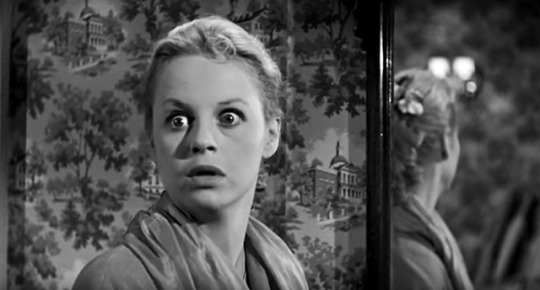
Still of Norma Eberhardt as Rachel Mayberry in the Return of Dracula, 1958
Female empowerment has been a theme I’ve relished. Women taking control, showing courage and ingenuity in films like: Cry of the Werewolf, dir. Henry Levin, 1944; She-Wolf of London, dir. Jean Yarbrough, 1946; The Return of the Vampire, dir. Lew Landers, 1943; The Return of Dracula, dir. Paul Landres, 1958; Island of Doomed Men, dir. Charles Barton, 1940; The Maze, dir. William Cameron Menzies, 1953; Phantom of the Opera, dir. Arthur Lubin, 1943.
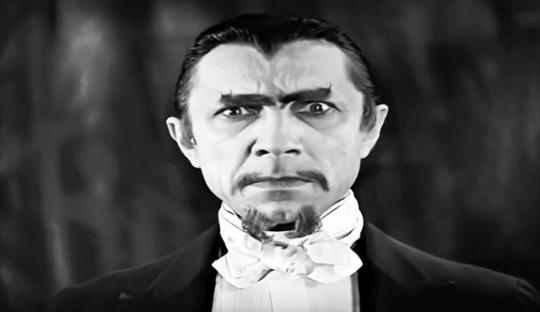
Still of Bella Lugosi as "Murder" Legendre in the White Zombie, 1932
I’m becoming familiar with the work of some of the greatest actors of the genre. I’ve seen lots of Bella Lugosi films: Dracula, dir. Tod Browning, 1931; White Zombie, dir. Victor Halperin, 1932; Son of Frankenstein, dir. Rowland V. Lee, 1939; Black Friday, dir. Arthur Lubin, 1940; The Wolf Man, dir. George Wagner, 1941; The Return of the Vampire, dir. Lew Landers, 1943. Boris Karloff co-starred in many films with Lugosi, but was a star in his own right. I’ve seen more Karloff films: The Mummy, dir. Karl Freund, 1932; The Ghoul, Dir. T. Hayes Hunter, 1933; The Black Room, dir. Roy William Neill, 1935; Son of Frankenstein, dir. Rowland V. Lee, 1939; Black Friday, dir. Arthur Lubin, 1940; The Devil Commands, dir. Edward Dmyryk, 1941.

Still of Boris Karloff as Ardeth Bay / Imhotep / The Mummy in The Mummy, 1932
With only a few days left of October, I’m already planning the films I might watch next October. 31 days of Australian horror films? I’m not sure yet, but I will certainly have fun when I get there. Beginning something, challenging myself, learning, enjoying the adrenaline of being scared, laughing and sharing these films with others, I’ve enjoyed discovering some truly incredible films.
Beginning is the theme for newCardigan’s GLAM Blog Club this month.
#glamblogclub#glam#ausglamblog#archivist#museum archivist#glam blog club#newcardigan#glam geekery#horror#horror films#classics#31 days of horror#halloween
5 notes
·
View notes
Photo

The latest The public libraries Daily! https://t.co/QbPb5oweak Thanks to @NOLALibrary @AusGLAMBlogs @RussDaum #books #agile 2PLAN22 http://twitter.com/2PLAN22/status/939207845983260673
The latest The public libraries Daily! https://t.co/QbPb5oweak Thanks to @NOLALibrary @AusGLAMBlogs @RussDaum #books #agile
— Plan22 Archibrarians (@2PLAN22) December 8, 2017
#OLASC16 The latest The public libraries Daily! https://t.co/QbPb5oweak Thanks to @NOLALibrary @AusG
0 notes
Text
Create, the passion
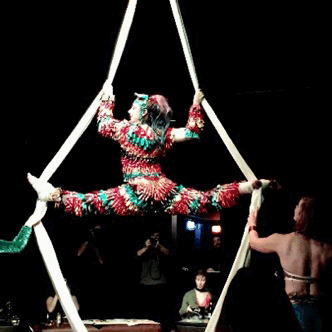
Gif from a video I shot of KillJoy performing at Dr Sketchy’s at 24 Moons, 14 September 2017 © Nik McGrath
I’m passionate about my job and the GLAM sector. GLAM isn’t my one and only passion. A benefit of having many alternative passions is they help sustain my passion for GLAM.
I feel passionately about the importance of GLAM workers having interests outside the world of GLAM. I believe we keep our passions alive at work, and within the GLAM community, by having passions outside work.
Passions outside of GLAM may fuel our discovery, innovation, ideas and inspiration at work. Ideas and ways of doing things in other areas may help resolve challenges we are facing at work.
I use a lot of emotional energy in my work. Self care is important. Drawing is one of the only times I really let go of the thoughts constantly rattling away in my mind. Drawing is my main form of self expression and relaxation.
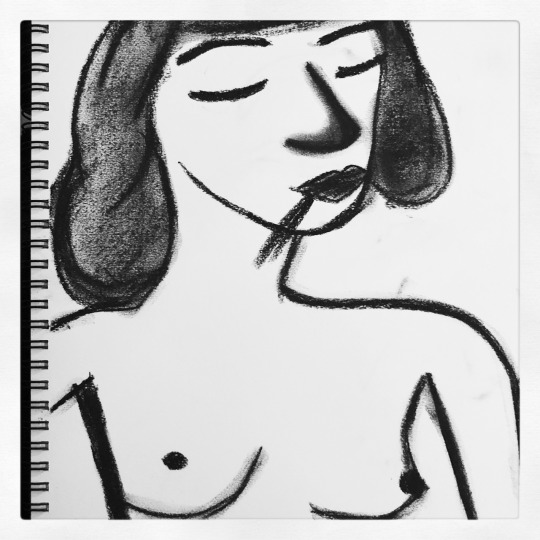
My sketch of a model performing to the theme Vampyros Lesbos at Gay Life Drawing at Hares & Hyenas, 13 March 2018 © Nik McGrath
I enjoy all forms of art - performance, music, visual art, film, dance, photography... I often think that one day, when I retire, I will have a full life because of all of these passions that I have to sustain me. That comforts me.
Passion was the theme for GLAM Blog Club in May. Create is the theme for June. One blog, two themes.
1 note
·
View note
Text
Secret about a secret
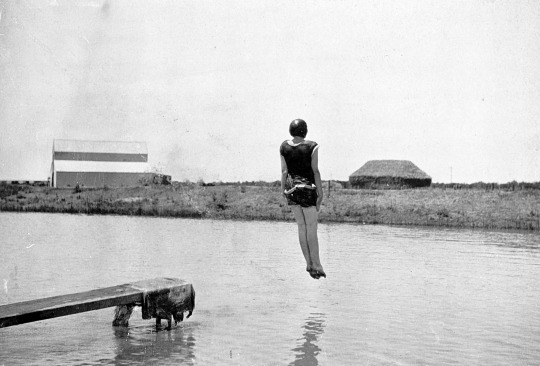
A young girl jumping, feet first, into a dam, Mildura district, 1924 / Photographer unknown / Source: Museums Victoria, Item MM 5035
“A photograph is a secret about a secret. The more it tells you the less you know.” – Diane Arbus
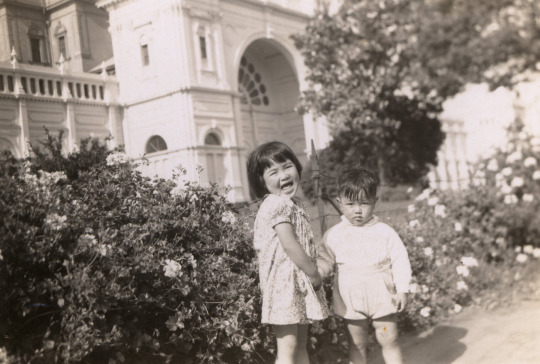
Phyllis and Jeffrey Louey Gung outside the Royal Exhibition Building, Carlton Gardens, Melbourne, circa 1948 / Photographer unknown / Source: Museums Victoria, Item MM 136700
Photographs of people are a source of happiness for me. The more I look into a photograph and think, why was the photograph taken, was the subject exploited or misrepresented, my initial happiness can go two ways. I can either become obsessed about finding out more about the subjects and context of the photograph; or I can simply enjoy the photograph for the aesthetics and intrigue it provides.
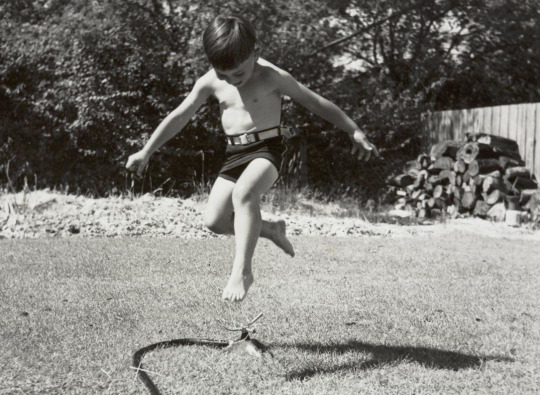
Gerald Brocklesby jumping over the sprinkler in the back garden of his family home at Blackburn, 17 January 1953 / Photographer: Mark Linacre Brocklesby / Source: Museums Victoria, Item MM 110316
With more photographic collections digitised and made accessible online, more than any other time in history we have access to these remarkable photographs from collections all around the world. This also makes me very happy.
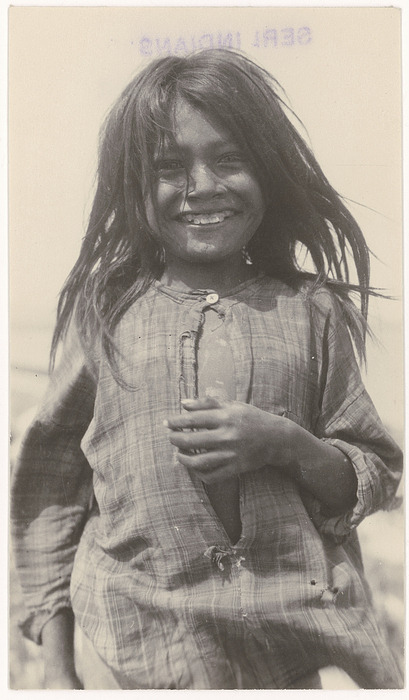
Outdoor portrait of a smiling girl, Isla Tibur��n, Mexico, 1924 / Photographer: Edward H. Davis / Source: National Museum of the American Indian, P06267
This month’s newCardigan GLAM Blog Club theme is happiness. Photographs sometimes capture the happiness of the subject. Is it true happiness captured? Often when a camera is pointed at a subject, the subject will automatically smile or laugh for the photographer. Are they happy to have their photograph taken, embarrassed or conditioned to smile for a photograph? Is happiness contrived?
#glamblogclub#GLAM Blog Club#glam#AusGLAMBlog#archivist#photographic collections#photographs#portraits#museum collections#happiness
2 notes
·
View notes
Text
Private moments
Voyeurism is part of the job. Reading correspondence, private diary entries, works in progress.... I watch private moments in the archives. I wonder if the author of these private moments considers when writing that these moments are in fact not private. They belong to the organisation they work for, and will be studied in years to come. If the author is aware, does this alter their mode of expression? In the Museums Victoria Archives, correspondence between experts working in the same field but different countries, over many years, the lines are blurred between professional exchanges and the personal friendships that form. Family holiday postcards are exchanged, and filed dutifully along with correspondence on museum letterhead. The sense of watching is felt keenly.
Museum experts receive letters from interested members of the public, all kinds of enquiries that are each dutifully responded to in turn. As the Museum has grown, so has the number of enquiries. Now a unit in the museum fields these enquiries and logs them in a central database. No enquiry is ever allowed to fall between the cracks. A great deal of work goes into providing access to information, collections, experts and answers. In 1988 a 9 year old girl wrote to the Museum of Victoria about her stamp collection, her interest in stamps, and declared that “... collecting stamps is one of my best hobbies”. The girl also asked for information on collecting stamps and asked if the Museum could send her some. Such a tender and heartfelt moment, which could have been easily crushed if the girl received no response from the Museum, or received a short and sharp response. Thankfully John Sharples, Curator of Numismatics, did not disappoint. In fact, Sharples letters never disappointed, he always gave kind and informative responses to all his correspondents.
Sharples replied: “Thank you for your letter about your stamp collection. Unfortunately the Museum has no printed information on stamp collecting that I can send to you. We have only a small stamp collection from the period when stamps were first used in Australia”.
Although Sharples was unable to provide information about stamp collecting, and could not send the girl any stamps, he was still encouraging: “May I suggest that you visit your local library and ask the librarian to show you where the books on stamps are kept”.
If I was the girl who received this letter, I’m sure my love of stamp collecting would have been inflamed by such encouragement. Sharples final encouragement: “Stamp collecting is indeed a good hobby and I hope that you continue to enjoy it for many years”.
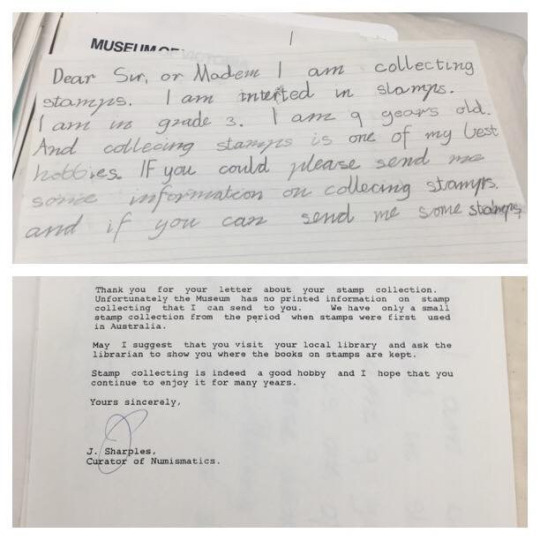
Above cropped image of letter from unidentified girl addressed to the Museum of Victoria, and below reply from John Sharples, Curator of Numismatics, 1988 / Photographer: Nik McGrath / Source: Museums Victoria Archives
This is just one example in a sea of private moments contained in the Museums Victoria Archives. I feel privileged to witness these moments. These letters feel fresh, indeed 1988 is recent history. In fact I was 7 turning 8 years old myself in 1988. This letter could easily have been written by me. I too had a stamp collection which was one of my prized possessions.
I have protected the identity of the girl in sharing this letter online. I wonder if she might see this blog and remember writing the letter.
Private moments are recent, and also distant memory. Letters written over 100 years ago, the ink bleeding into the soft tissue paper, paper folds cutting into the fragile paper, bring to life moments that feel like they happened yesterday.
‘Watch’ is our theme for newCardigan’s February GLAM Blog Club. I never realised how much watching and voyeurism is an essential part of my job.
#glamblogclub#GLAM Blog Club#glam#GLAM geekery#AusGLAMBlog#archivist#museum archivist#Museums Victoria Archives#Museums Victoria#correspondence#archives#watch
4 notes
·
View notes
Text
Walking a tight-rope
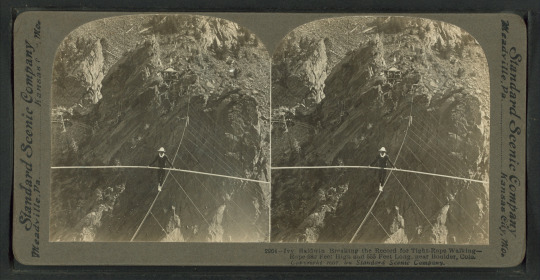
Ivy Baldwin crossing Boulder Canyon on a tightrope, 1907 / Photographer: unknown / Source: Robert N. Dennis collection of stereoscopic views, Colorado, New York Public Library
Do you ever feel like you’re walking a tight-rope? Future gazing and workplace planning are important tools to achieve goals. If a work-plan reflecting all of the important components of your role within an organisation is created and implemented, it is indeed possible to find balance between these components.
This month’s newCardigan GLAM Blog Club theme is balance. The idea is that you can interpret that word in any way you like. Instead of looking at work-life balance, or another meaning of the word balance (I did consider sustainable collecting), I have chosen to consider the balance I strive to achieve everyday in the work I do, with a sense of duty in meeting the requirements of my position.
During the interview process for my current position as archivist at Museums Victoria, I was asked to present my vision of the first 12 - 18 months in the position based on the position description supplied. When reading the position description, I saw a need for balance between the twelve objectives listed.
As all archivists do, I immediately saw a need to classify the objectives into functions, then sought to divide each week into fragments of time based on the priority I placed on each function. The twelve objectives were divided into five main functions: access; storage; collection management; governance and legislation; and finally, a volunteer and student program.
I noted that access would be given priority, as I feel strongly about promoting archival holdings to ensure increased accessibility, not only to researchers but all members of the community. The position is four days a week, and thus I divided my week into one and a half days spent responding to research and access requests; promoting archive material for publications, exhibitions, and online; developing finding aids; identifying vital records; and developing a digitisation plan.
Storage, given second priority, I assigned a day a week, including appraisal and disposal work; managing the space requirements and resources of the repository; and monitoring environmental conditions in the repository.
The last three functions I equally divided into half a day each per week. Collection management has one main objective, to work with stakeholders to manage archive holdings across collections and institutions. Collection management is a larger function including storage, facilities management, preservation and conservation requirements, ordering archive supplies, and the list goes on and on. I consider the job of archivist closely aligned to that of a collection manager.
Governance and legislation has two main objectives: to adhere to Museums Victoria’s policies and procedures; and to adhere to relevant archives legislation and regulations. This often requires the development of internal policies and procedures, and to update existing ones. It’s also important to stay up-to-date with any changes in industry legislation and regulations.
A volunteer and student program, is the last of the five functions, which includes training and supervising other workers, students or volunteers on projects in the Archives. I find all aspects of my work extremely rewarding, working with volunteers and students, helping them learn new skills and seeing them flourish, makes me feel that I am positively contributing to the GLAM community and advocating for the role of archivists in the workplace.
Some weeks I feel that I achieve a balance between these functions, and other weeks one function may take priority. However, these functions are a guide for me to revisit regularly. I often consider, am I servicing each function as I should? Am I giving priority to one function when needed? Am I finding balance between all of my functions as an archivist?
Walking the tight-rope that is my life as an archivist often requires a long view, planning projects based on the priorities of the organisation, years into the future. It is easy to get lost in the legacy that is archival work, and the volume of work ahead. However, I feel that dividing and conquering, seeking a balance in daily and weekly tasks, helps manage and find balance in all of the functions that make up the role of archivist. Walk that tight-rope, and don’t look down.
#GLAM#glamblogclub#AusGLAMBlog#archivist#museum#collection management#balance#workplan#planning#access#storage#governance#legislation#volunteers#students#mentoring#community#priorities#Museums Victoria
1 note
·
View note
Text
The Road Less Travelled Part II
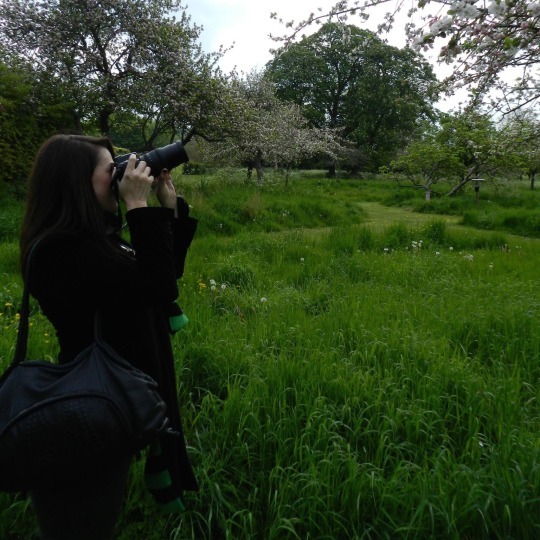
How did she end up here, like this? How could there have been so much - so many moments, so many people and things… - Everything is Illuminated, Jonathan Safran Foer
In January this year I wrote a blog The Road Less Travelled, sharing my path to becoming an archivist: https://musingsofableedingheart.tumblr.com/post/156377570259/the-road-less-travelled-like-many-people. My archivist origin story is well covered in this blog, however I would like to add some more thoughts about ‘How I ended up here’ for this month’s newCardigan GLAM Blog Club.
When I became an archivist, I found my vocation. For as long as I can remember I have been obsessed with history, photography, art, material culture and piecing together narratives based on evidence from primary sources. As a museum archivist I have access to collections that feed my obsessions, and I receive many research enquiries that requires the piecing together of narratives based on archival evidence.
An example of piecing a narrative together is my research about the scientist Fay Murray. In December last year I received a public enquiry via the Discovery Centre at Melbourne Museum about Fay Murray from her nephew Reg Murray. Reg contacted the Discovery Centre about his aunt seeking information for the family history he is compiling. With the information that Reg supplied to the Discovery Centre, namely that Fay was a scientist who specialised in molluscs, in the 1950s to 60s, I immediately thought Fay may have worked with Hope Macpherson, who was Curator of Molluscs at the Museum during that time, the first female museum curator in Australia.
Fay’s story is particularly touching as she had rheumatoid arthritis, and overcame much adversity to pursue her love of science. With the help of Chris Rowley, Collection Manager in Marine Invertebrates, I have uncovered a great deal of information about Fay in the Archives, correspondence between Fay and Hope (1956 to 1964), I’ve interviewed her former colleagues (Bob Burn and Tom Darragh), inspected items Fay donated to the State Collection, and looked at her photographic slides (she was a gifted photographer), as well as corresponding and meeting with Reg Murray.
Chris and I took Reg to see the specimens Fay donated to the State Collection in the 1960s. Reg has sent me family photos of Fay and her siblings, and is still in contact. I will be publishing an article about Fay on the Museums Victoria website in the coming months.
Bringing personal stories to life from the archives is a passion of mine. I started out studying ancient history and art history after finishing high school and commencing my Bachelor of Arts at the University of Queensland. My passion for history remains strong all these years later. As an ancient historian, seeking primary sources was an important part of my education. To this day, I get a thrill each time I find out something important about my subject’s life from sources within the archives.
Another reason my path led me to archives is my passion for photography. Photography presented itself as a lens through which to see the world and a method to document aspects of my life and experiences. From my first experiences in the darkroom at high school, to my experiments that continued in the darkroom studying graphic design at uni a few years later, I grew a firm attachment to the art-form, which then gave me special insights into cataloguing photographic collections years later when my path led me to studying cultural heritage and later information management.
I see myself first as an archivist, and second as a photographer. However these two inextricably linked and interwoven elements of my vocation inform each other. My keen observation skills as a photographer allow me to see and observe important small and significant elements in the archives, and my attention to detail as an archivist describing items in the archives I bring to documenting metadata about my personal photographic collections. The archivist and the photographer in me understands the importance of documenting important moments that I will treasure in years to come. The family photographic archives are my responsibility, in many ways I know the digitisation, storage and access is solely expected of me by members of my family.
How I ended up here is a long and complicated story, with many strange twists and turns along the way. In some ways it was inevitable that I became an archivist, but in other ways I feel it was equally possible that I became a marine mammalogist travelling the worlds oceans, or a photographer hoping to live off my trade, a graphic designer selling my soul to the highest bidder, or an ancient historian seeking a new interpretation of a primary source that would wow classical historians, or an art historian breaking down stereotypes in the art world.
So many paths that I could have taken, but for some cosmic reason I was granted my dream job as a museum archivist, and I find myself in my vocation during an extremely exciting time where GLAM colleagues are collaborating on some of the most inclusive and innovative projects. I feel inspired and fortunate to find myself in this moment in time with such incredible people surrounding me.
2 notes
·
View notes
Text
Horror Hamlet
Hamlet is my favourite Shakespeare play, which has been the case since high school. I’ve seen many interpretations of Hamlet over the years. I remember seeing Heavy Metal Hamlet in the Botanic Gardens in Brisbane when I was still at school, which left a lasting impression. I saw Kenneth Branagh’s 1996 version of Hamlet in the cinema, which no doubt has influenced my interpretation.
I've been going through some old boxes, and found some journals from school, hence my nostalgic mood.
Do you have a favourite teacher from your school years that you still think about fondly? Well, my favourite teacher was Ms Poulsen. She had purple hair, loved Joy Division and let us stencil poetry on the classroom wall. She was very encouraging, passionate and an inspirational teacher. I still have the letter she wrote to me at the end of grade 12, and the bookmark she picked for me personally. She really cared about her students.
Ms Poulsen set us a task in grade 12 English to interpret Hamlet and write in our journal the ideas outlining our film version of Hamlet as director of the production.
In August 1998, when I was 17, I wrote my Director’s Address, which I’ve had a kick out of reading today, and I thought others might too.
‘The vision of Hamlet that I intend to direct is an R18+ horror film. Hamlet is a particularly violent play so far as the emotions of some of the characters express.
I wish to bring this out with sound and special effects. For example, the scene in which Polonius is slain by Hamlet, Hamlet could cut Polonius’ head off so that blood splatters on the walls and his head rolls off, and in his last breath of life the head attempts to bite Hamlet’s leg. His jaws clamp on tight and are difficult for Hamlet to remove [I was a bit obsessed with Jaws]. Gertrude may be hysterically screaming for what she has witnessed, and horror that Hamlet would turn on her next.
Words spoken to Claudius by Hamlet could be ones of complete verbal abuse - swearing, intimidation and veins popping in the neck. Hamlet could be a chain smoker displaying the stereotypical belief that people smoke in order to calm their nerves.
When Ophelia drowns it may be a struggle to survive with ranting and raving.
The final scene in which people are poisoned could induce projectile vomiting and blood spurting out of the mouth and ears. Violent palpitations could follow death. The room in which Gertrude, Laertes, Claudius and Hamlet are poisoned would be covered in vomit and blood.
The cast of my film version of Hamlet, if I had a choice and availability of any actor/actress I wish, would be the following: Hamlet - Gary Oldman; Ophelia - Jennifer Ehle; Claudius - Warren Clarke; Gertrude - Emma Thompson; Polonius - John Malkovich; Laertes - Rowan Atkinson (snobbish); Fortinbras - Robert Carlyle; Horatio - John Hannah, Rosencrantz - Rik Mayall; Guildenstern - Adrian Edmondson; and Ghost - Alan Rickman (evil voice).
My interpretation of the play Hamlet is that is is a play of death, the pursuit of death and violence which accompanies death. That is why I have chosen, as director, to make a horror film out of the play. I will be exaggerating the violence which exists so that a horror film will be developed.
My interpretation of the motivations of the characters is as follows: Hamlet is motivated by the thought of murdering his uncle; Ophelia is motivated by the love she feels for her family and Hamlet; Claudius is motivated by money, power and Gertrude; Gertrude is motivated by her duty as mother to Hamlet and Queen of Denmark; Polonius is motivated by gaining power and trust in the royal family of Denmark; Laertes is motivated firstly, by returning to France and secondly, by avenging his father’s murder; Fortinbras is motivated by gaining the territory his father lost and by physical violence (pursues war); Horatio is motivated by protecting his best friend Hamlet; R & G are motivated by sucking up to the royal family possibly in hope for gaining an important position; and the Ghost is motivated by ensuring that Hamlet kills Claudius.
My vision for the production of Hamlet in terms of costumes and set is that the costumes be for Hamlet dark and flamboyant. I think I desire something similar to that of Dracula in Bram Stoker’s Dracula (directed by Francis Ford Coppola), of that period.
Dracula was published in 1897, so I imagine the period which will inspire the costumes for my production of Hamlet will be 19th century.
I thought Winona Ryder was beautiful in Bram Stoker’s Dracula, however I wish to cast Jennifer Ehle starring alongside Gary Oldman as Ophelia. The costumes of Mina in Dracula will be idea for Ophelia with Ehle’s face.
Ehle recently acted in Wilde - Bram Stoker and Oscar Wilde were friends!
The castle at Elsinore shall me Gothic in architecture, dark and overwhelming. The rest of the characters will be dressed in 19th century costumes with red as the underlying colour. The Gothic castle I have in mind is of the 12th - 13th century in stone.
To make Hamlet a horror film, certain areas in the plot must be emphasised. The appearance of the Ghost in the opening scene must be absolutely terrifying. Bernardo, Francisco, Marcellus and Horatio must behave as though they truly believe that the Ghost is going to kill them in the most gruesome manner. To make this possible, Alan Rickman’s voice must be at its deadliest and face at his scariest. The special effects must create a feeling of hell fire when the audience views the Ghost for the first time. Devil creatures and demons will surround the Ghost as he has just come from hell itself. A transparent image of Hamlet’s fathers head with dry blood at the ears (where the poison was poured) would be rather shocking. The Ghost must be forceful and threatening on the point that his murder must be avenged.
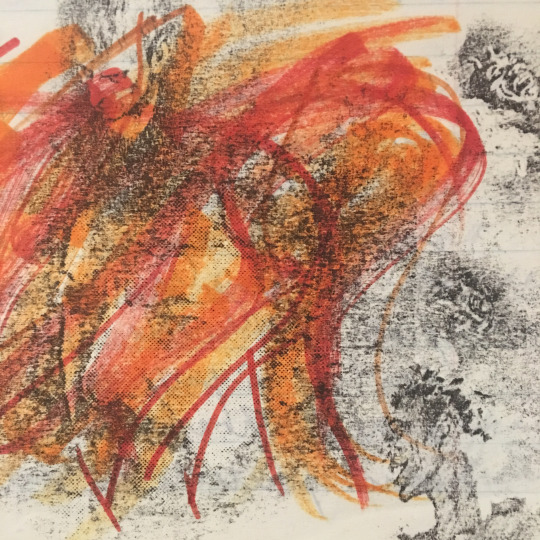
This is the image of hell I portrayed in my journal, with a rubbing of Alan Rickman’s face at the centre and Norman Lindsay’s hellish creatures and Norman Lindsay’s self portrait at the top left
In Act II Scene IV when Hamlet meets the Ghost of his father he must be amazed at the transformation of a person he once knew into some kind of monster [I too was surprised when Metallica released their song of the same name in 2003]. This idea and the entrance of the evil spirit into Hamlet’s soul encourages him to do all that he can to rid the world of his uncle. However, struggle ensues within Hamlet as to how far he shall go for his father’s spirit without acting completely immorally which is against his nature. The Ghost consumes him during acts of violence, such as, in Act III Scene IV when Polonius is slain.
In Act IV Scene V when Ophelia goes mad she must behave out-of-control. The nature of her madness turns to extreme violence to anyone who comes close to her. She bangs her head against the floor and walls and she leaves howling in pain. Her death in drowning is one of thrashing and violence. Screams which penetrate the soul and thanks to the grand sound effects make the audience disbelieve that Ophelia is the same person. Blood spurts from her wounds due to the intensity of her screams and thrashing about.
Act V Scene II the last scene of the play is filled with horror to the climax of the play. The poisoning of Gertrude, Laertes, Claudius and Hamlet involves projectile vomiting and blood spurting out of the mouth and ears. Possibly due to the ingredients of the poison. Violent palpitations follow death.
The camera techniques must involve crystal clear images and many close-up shots of Hamlet’s face so that expressions are important. Swift movement in times of murder and violence will build the effect.
The problem in doing this is justifying the amount of violence. For an audience in 1998 to make Hamlet original and intriguing for this audience, to believe a horror film would be an excellent way to do this, and attract a younger audience who may not wish to be bored by lengthy 4 hour versions which have previously been put out! This does not mean that I do not admire and enjoy the Kenneth Branagh version.’
If you’ve read to this point, thank you for going on this journey down memory lane with me. This month I’m thinking about identity for GLAM Blog Club, and looking into my past is part of my efforts to prepare for writing a blog about myself and who I am.
12 notes
·
View notes
Text
Crashing Waves Through the Wall
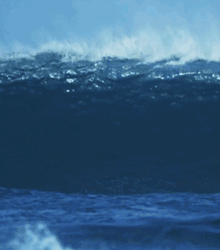
The archives repository is silent. Tucked away on the ground floor of Melbourne Museum, back of house, the Museums Victoria Archives shares a collection store with the Museums Victoria Library journal collection. We also share a wall with the Te Pasifika Gallery and when it is silent - no chatting staff or volunteers - I can hear an audio loop of crashing waves through the wall. Without this audio loop the silence is deafening. The excruciatingly load announcement over the loudspeaker, ‘the museum will close in 5 minutes’, also breaks the silence.
The theme for newCardigan’s GLAM Blog Club this month is silence.
After silence that which comes nearest to expressing the inexpressible is music - from essay The Rest is Silence in Music at Night and Other Essays, Aldous Huxley, 1931. Silence is just as powerful as music. Yin and yang, music and silence are opposite forces. When I am alone in the archives I very rarely sit in silence. I often listen to music.
Conspicuously the air conditioning is barely audible. In some collection stores the air conditioning is very loud because the temperature must remain low to preserve the collection. In the archives where the collection is predominantly paper-based, the temperature must remain under 20 degrees celsius and thus the air conditioning gets less of a work out.
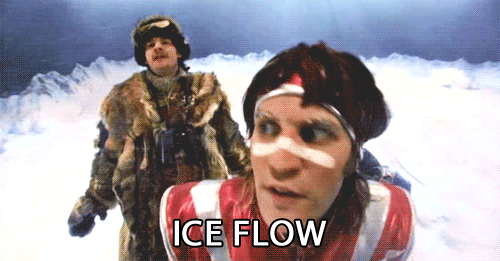
Cold vaults storing audiovisual and photographic collections under 10 degrees celsius are loud places.
So not all archives are silent, but I think it is fair to say that most archives have stories that remain silent. Thousands of voices are in the pages carefully filed away in archive boxes waiting to be given a voice.
It’s the responsibility of the archivist to ensure that the collection under their care is accessible, and to raise the profile of the archives and the valuable information housed within their collection. Archivists create finding aids to give a voice to silent records.

Archives often contain at least one Ziggy Stardust or vital record in their collection. The Ziggy Stardust of the archives will have a voice over and over again through generations of researchers. The unsung heroes, the voices unheard, are often just as compelling as the Ziggy Stardust’s of this world.
If nobody else sees value in these stories, the archivist who knows their collection best has an opportunity to tell stories from the archives in a variety of ways. Archive tours, blogs, seminars, research requests, finding aids, and archival description are just some of the ways.
I love when the museum is bustling with visitors - it’s function is to be enjoyed by the community, it is a sad sight to see it on low visitation days. However, the scale of the building, the endless glass and polished concrete floors are an acoustic nightmare. It is remarkable how sound travels when a kid screams in excitement or in protest. School holidays are something else entirely. I will confess the silence in the museum after hours is ecstasy. For those who don’t often have time alone, it’s akin to those stolen moments of solitude.
1 note
·
View note
Text
Fear

Fear is the theme of this month’s GLAM Blog Club. For the longest time, I wasn’t sure what to write about. Not because I’m not afraid of anything. I’m afraid of losing the people I love the most - not from them leaving me - but I’m afraid of death taking the ones I love. I’m afraid of the terror which is gripping our world. I’m afraid of war, famine, climate change, and the terrible destruction humans have brought to our precious planet. I’m afraid of reaching my death bed and having regrets about the things I didn’t do with my life. So, lack of fear was never the problem when it came to my writer’s block for this month’s blog.
To bring the theme back to my work as an archivist, the thing I fear the most at work is failure. Failure to ensure the preservation of the rich archive under my care. Failure to make the archive more accessible to more people. Failure to meet the expectations I put on myself when responding to research enquiries. Failure to understand the depth and breadth of the archive. Failure to support my colleagues, my department and my organisation. Failure to carry out and complete all of the projects I have committed to, failure to see things through. Failure to meet the professional standards set down by my professional body, the Australian Society of Archivists. Failure on a professional and personal level to meet the expectations of the wider GLAM (galleries, libraries, archives and museums) community.
Having shared my fears of failure, I will say, I do not live in fear. My fears are real, but instead of letting them own me, I own them. I work hard, and try my best, to ensure that my fears at work, and in life, are not self-fulfilling. I make the most of my time with my loved ones. I tell them I love them, and I keep my dark thoughts at bay. I fear climate change - so I try to do my bit for the environment by choosing to live my life as a vegetarian and by supporting initiatives to protect our environment.
Fear is a state of mind. I choose to live my life unafraid, honest and true to myself and those I love and respect. I conquer my fears by pushing myself to try new things, learn from others and face up to my fears. I think the more we share our fears with others, the less our fears have a power over us.
1 note
·
View note
Text
Digital museum
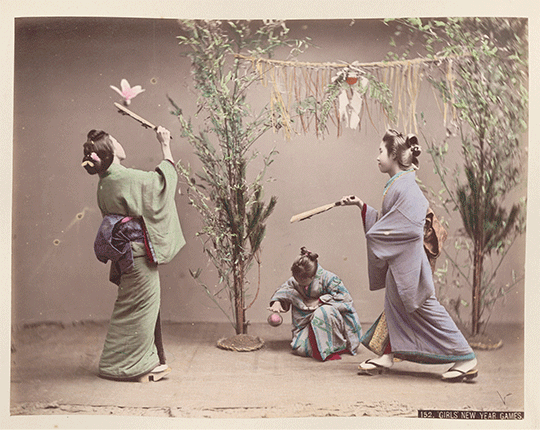
What direction will the digital age take museums?
Digital preservation is a vital tool in the management of museum collections. Digitised and born digital collections are increasingly made accessible online to local and international researchers and communities.
The preservation of artefacts and specimens digitally does not make the artefact or specimen obsolete, but provides a digital copy or surrogate, an insurance policy if the item is lost or deteriorates over time. Digitised collection items also provides the means to exchange knowledge about collection items between experts in different collection institutions without necessarily viewing the physical item.
Gemma Steele, librarian at Museums Victoria, recently wrote an article about the Rare Book Collection at Museums Victoria for the Australian Society of Archivists VIC Branch June newsletter. Museums Victoria Library has “the only copy of Albertus Seba’s Locupletissimi rerum naturalium thesauri accurata descriptio (1734-65) held in Australian libraries.
One of the volumes has been digitised and is available via the Biodiversity Heritage Library (BHL). Other institutions, such as the Smithsonian, have added their own digital copies, which has allowed us to compare hand-colouring and binding. The opposum’s teal nails, which we originally thought to have been a flight of fancy on behalf of the colourist, are in fact consistent across the coloured copies available in BHL.”
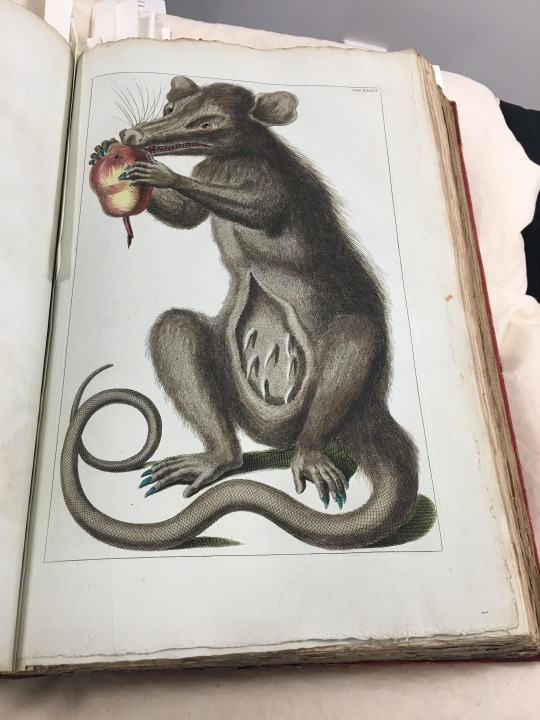
Albertus Seba’s Locupletissimi rerum naturalium thesauri accurata descriptio (1734-65) / Photographer: Nik McGrath / Source: Museums Victoria Library
Digital experiences physically in museums and virtually on museum websites and apps, provide alternative ways of interpreting collections, accessing museum expertise and knowledge, as well as new ways of thinking about collections, programs and exhibitions.
“Preservation is commonly perceived to be the responsibility of large, well-resourced institutions such as national libraries and archives, state libraries, and university and research libraries. This perception is no longer valid in the digital age. It may have been a legitimate view in the days when expensive conservation laboratories were considered necessary for a successful preservation program and when computer installations were few in number, but the current reality is very different. Digital materials are now being created at a rapid rate by many different kinds of communities. Responsibility for their preservation must be shared among diverse creators and users of digital information, and cannot remain solely the concern of librarians, archivists, and specialists with skills in digital preservation” – Ross Harvey and Jaye Weatherburn, Preserving Digital Materials, Third Edition, 2018.
Museums Victoria’s Strategic Plan 2017 to 2025, in Lynley Marshall’s CEO message, the following statement is made: “We will create digital experiences that deliver Museums Victoria’s stories, research, collections and content far beyond our walls to the world at large. As a leading centre for technological and scientific excellence, we will foster innovation and enterprise in Victoria”.
Digital is one of the three transformational themes in the Strategic Plan: “Develop a Digital Life for Museums Victoria that takes the wonder and inspiration of our collections, knowledge and expertise beyond our walls through audience-centred experiences that connect with hearts and minds.”
Digital preservation isn’t the answer for all preservation and access issues, however innovative ways of using digital in the GLAM sector is the direction we’re moving and who knows what the future holds...
#glam#glamblogclub#ausglamblog#archives#archivist#museum archivist#newcardigan#glam geekery#glam blog club#museum#museum collections#digital preservation#digital#preservation#rare books#digitisation#born digital
5 notes
·
View notes
Photo

The Road Less Travelled
Like many people working in the archival profession, my path was not a direct journey from school to university to archivist job. However, everything I have done before I draw upon in my work, and I think it has prepared me for the range of skills expected of archivists today. At school I was divided between my love of biology and pursuing a career as a marine mammalogist, and my love of history and art – and who knows what career path that would take me on.
In the end, history and art won, and I went to the University of Queensland (UQ) to study art history, ancient history, anthropology, archaeology and gender studies, completing my Bachelor of Arts with a double major in ancient history and single major in art history. However, I was not sure how to apply those skills in the workforce, although I knew I was in the right place when handling and studying ancient artefacts in the Antiquities Museum. I went on to study graphic design with electives in photography and printmaking, but my love of history remained.
I then moved to London and my world got bigger. When I returned to Melbourne I decided to follow my dream of working in a museum, something I was interested in from a young age and from those initial experiences handling ancient artefacts at the Antiquities Museum at UQ, so I enrolled in the Master of Cultural Heritage degree at Deakin University.
While undertaking my studies, I completed an internship at Melbourne Museum on the ‘Advertising Kodak’ - Data Enhancement of Advertising Ephemera & Archives in the Kodak Heritage Collection with Senior Curator in Images and Image Making, Fiona Kinsey. Under Fiona’s mentorship and with my first experience registering an archive collection, I was hooked.
I went on to specialise in photographic archives, working with The Duldig Studio collection, University of Melbourne Archives AMP Ltd Collection and the ABC Archives Natural History audiovisual collection and South Australia branch photographic collection. An interest in photographic archives began during my studies in photography both in the darkroom at school and university and my practice as a photographer. I see photographic archives from the perspective of an archivist, and that of a photographer.
I see the incredible value in archives to historians. I worked for a short time on an archive project at the Melbourne Youth Justice Centre. The potential of utilising the archives there to improve the education and rehabilitation of young offenders was something I felt strongly about, but unfortunately something that is perhaps a long way off.
In my current position as archivist at Museums Victoria, I manage the permanent records of an organisation founded in 1854, with a rich history that in many ways is closely aligned to the history of Melbourne. The Museums Victoria Archives contain vital records about the State Collection and the activities of its employees. Although my interest in photographic archives remains, I feel that the juicy historical records contained within our inwards and outwards correspondence are of great significance and interest to me as a historian. I feel extremely fortunate to work at the museum; I have found my dream job that combines my love of museums with my love of archives.
Not long after joining Museums Victoria in October 2015, I was asked by the founders of the GLAM group newCardigan to join the cardi core (committee) in order to represent archives and museums. The founding members Hugh Rundle and Justine Hanna are public librarians, and have been brilliant people to work with, creating a sense of community in the GLAM sector in Melbourne.
I have also recently joined the ASA VIC branch committee as Communication Officer. I hope to fill Nicola Laurent’s shoes as she has done a fantastic job by bringing new initiatives to the branch, and disseminating information to the archival community in Victoria and beyond.
I recently read Nicola Laurent and Annelie de Villiers blog post ‘2016: The Pact the Proves the Value of New Professionals’ (https://anneliedevilliers.wordpress.com/2016/12/19/the-value-of-new-professionals/), and I agree wholeheartedly that the archival profession is extremely welcoming to new professionals, and if you put your hand up, show enthusiasm and passion, work hard and engage with the GLAM community, you too can make all the difference.
2016 was an extremely exciting and rewarding year for me personally and professionally because I put myself out there, along with my fellow cardi core (Hugh Rundle and Justine Hanna) I helped develop a growing cardi community in Melbourne (see our website for upcoming events and to find out more about us: https://newcardigan.org/), and by stepping up at the Australian Society of Archivists Victorian Branch, I have now joined the committee and have great plans to improve the sense of community for our members in Victoria.
2017 will be a year of learning and personal growth, and I look forward to all of the wonderful people I will meet and strengthening all my current working relationships. Lifelong learning is something I believe we should all pursue. I learn from the most fantastic people I am surrounded by in the GLAM profession and the versatile workforce I am part of every day of my working life.
#glamblogclub#AusGLAMBlog#glam#archivist#museum archivist#museum#career#personal story#newcardigan#australian society of archivists#lifelong learning
1 note
·
View note
Text
Safe Enough Spaces

Verne Harris raised the concept of ‘safe enough spaces’ in his opening keynote, Passion for Archive, at the Diverse Worlds 2017 National Conference of the Australian Society of Archivists (ASA) in Melbourne this week. Harris’ concept of ’safe enough spaces’: ‘There is no such thing as a safe space, but we can create safe enough spaces. A space for people with opposing views to listen to each others views, and hopefully leave the space with a change in view. Failure is not an ending.’
The theme for newCardigan’s GLAM Blog Club (galleries, libraries, archives, museums) this month is ‘safe’. Harris has not played it safe. In his career as an archivist in South Africa, going back to 1985, Harris has been an example to us all. Harris is an important activist archivist, with an instrumental role in the international archive community for creating safe enough spaces for dialogue, but also for creating a safe space for the archive profession to make a change, not play it safe, and, helping the profession realise that we cannot be neutral.
Harris has the responsibility in his current role as Head of the Memory Programme at the Nelson Mandela Foundation’s Centre of Memory and Dialogue, to safeguard Mandela’s vision for the Foundation (established in 1999): … a society which remembers its pasts, listens to all its voices, and pursues social justice. Its mission is to contribute to the making of a just society by keeping alive the legacy of Nelson Mandela, providing an integrated public information resource on his life and times, and by convening dialogue around critical social issues. Dialogue as an instrument for finding sustainable solutions to intractable problems is fundamental to understanding Nelson Mandela’s legacy. In mandating the Nelson Mandela Foundation, he insisted on one of its core objectives being the creation of a space which would bring together those who think they have little in common and who might have no desire to listen to one another. Such a space has to be a safe space. This is the space in which sustainable solutions can be worked out. - from The Mandela Dialogues on Memory Work 2 - Creating Safe Spaces Across Generations.
Land claims, oral histories, the difficult archival work of returning over 100 human remains of activists to their families, uncovering archives and engaging with community has been Harris’ work, along with many others in South Africa, over many years. ‘The archive as apparatus of power’, is Harris’ call to arms for the archive profession. Harris stresses ‘the importance of archival work for every form of liberating work’.
‘Democracy is failing us, it’s another form of oppression’, Harris stated a belief that I’m sure many archivists and GLAM professionals share. ‘However, without hope there is no engine of struggle. I live in a space beyond hope - I have faith. My faith is sustained by stories from the archive’.
It is difficult to fully understand how Harris defines ‘hope’ and ‘faith’, and if his use of the word faith is a religious or non-religious definition of the word. After over 30 years in the profession, it is understandable that Harris has moved ‘beyond hope’.
Harris has recommendations for transforming the infrastructure of archives, what he calls ‘decolonising the archive, changing the Western way of organising information’. An example of this would be translating the language of finding aids to enable Indigenous access. For more detailed recommendations, Harris’ keynote will be published in Archives and Manuscripts, the journal of the Australian Society of Archivists.
Harris shared that ’Nelson Mandela was an obsessive recordkeeper, he had an obsessive personality - he’d drive you nuts!’ Harris has a team of archivists who manage Mandela’s personal papers. ‘Power is expressed in many different ways in that collection’, Harris said. ’That archive imprisons him all over again’, here he refers to sites of pain documented in the archive.
I think the GLAM profession has an opportunity to move away from the idea of remaining neutral in political debates and social change, instead we as individuals and as a community can be agents for change. We can create ‘safe enough spaces’ for transformative dialogue to take place. I will be thinking long and hard about the inspirational messages of diversity, political action, and social change presented at the ASA Conference, and hopefully contribute meaningfully to the debate in my own practice.
#glamblogclub#AusGLAMBlog#archivist#museum archivist#GLAM#archive#archives#Verne Harris#Australian Society of Archivists#conference#Diverse Worlds#diversity#social change#political action#keynote#newcardigan
0 notes
Text
Catalogue of Futuristic Portrayals of Galleries, Libraries, Archives and Museums (GLAM) in Sci-Fi Films and TV Episodes
GLAM 3017 is the theme of this month’s GLAM Blog Club. Where do we think GLAM will be in a thousand years?
Sci-fi as a genre has often predicted the future. So I have decided to create a catalogue of sci-fi films and TV featuring portrayals of galleries, libraries, archives and museums in the future, as I think these films may predict the future of GLAM.
Andrew Kelly argues that Star Wars is set in the past, so is not an example of what things might be like in the future. I would argue that it is just as likely that we could be watching those stories from the past in the future. I think Star Wars films such as Attack of the Clones and Rogue One have portrayed some of the most compelling archives of the future, so I have included these films in my catalogue.
Many of the films and TV in this catalogue may not be set 1000 years into the future, however I think they assist the imagination in seeing what may be possible, or indeed a reality, in the GLAM world in the future. I am making a huge assumption that humanity will still exist in some form in a millennium from now, assuming we have not exhausted all of our resources, destroyed the planet and each other in warfare, and that Mother Earth doesn’t reclaim what is rightfully hers, I am airing on the side of blind optimism. Let’s hope major change happens to make a sustainable future for humanity possible.
If you have any suggestions for the catalogue please contact me because this database is a work in progress, and I would love to add to it and discuss the selection with my fellow GLAM Bloggers.
The catalogue is arranged chronologically from release date so that you can follow the progression of portrayals of futuristic GLAM through different periods in time where technology and ideas change over time, and perhaps even influence filmmakers and TV producers.
Warning: I have attempted to avoid spoilers in this catalogue, however please be warned that the stills and plot information may contain some key details about the films and TV episodes that you may wish to avoid if you haven’t yet seen them and wish to see them in the future (pardon the pun). The films and TV episodes included in the catalogue in chronological order are: All Our Yesterdays in Star Trek, Season 3, Episode 23; Visitor of a Museum; Star Wars: Episode II – Attack of the Clones; Silence in the Library in Dr Who, Fourth Series, Episode Eight; Forest of the Dead in Dr Who, Fourth Series, Episode Nine; Robot & Frank; and Rogue One.
I have included skeleton records as I do plan to update this blog, and I also have a list of possible films and TV episodes that I want to watch and re-watch before adding them to the catalogue. I really should have started this catalogue earlier in May, but it has been a very busy month!

Still image of Captain James T Kirk and chief librarian Mr Atoz in All Our Yesterdays in Star Trek, Season 3, Episode 23 / Source: © Paramount Television
Title - All Our Yesterdays in Star Trek, Season 3, Episode 23
Director - Marvin J Chomsky
Writing credits - Gene Roddenberry (created by) ; Jean Lisette Aroeste
Release date - 14 March 1969
Company credits - Paramount Television ; Norway Corporation (in association with)
Plot summary - to be updated
GLAM plot - to be updated
Genre - Action ; Adventure ; Mystery ; Sci-Fi
Copyright status - This work is in copyright
Terms of use - Copyright restrictions apply
Distributed by - National Broadcasting Company (NBC) (1969) (USA) (TV) ; Paramount Home Video (2009) (USA) (Blu-ray) (DVD)
Formats - Home media – Blu-ray ; DVD
Runtime - 50 minutes
Subjects - to be updated
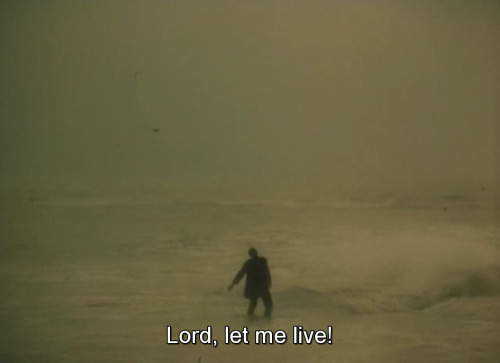
Still image of Visitor of a Museum / Source: © CFM Productions
Title - Visitor of a Museum
Director - Konstantin Lopushanskiy
Writing credits - Konstantin Lopushanskiy
Release date - July 1989 (Moscow Film Festival)
Company credits - CFM Productions ; Goskino ; Lenfilm Studio ; Studio Troitskij Most ; Zweites Deutsches Fernsehen (ZDF)
Plot summary - to be updated
GLAM plot - to be updated
Genre - Action ; Adventure ; Mystery ; Sci-Fi
Copyright status - This work is in copyright
Terms of use - Copyright restrictions apply
Distributed by - Films Cosmos, Les (1990) (France) (theatrical)
Formats - to be updated
Runtime - 136 minutes
Subjects

Still image of Obi-Wan Kenobi researching in the Jedi Temple Archives in the film Star Wars: Episode II – Attack of the Clones / Source: © Lucasfilm Ltd 2002
Title - Star Wars: Episode II – Attack of the Clones
Director - George Lucas
Writing credits - George Lucas (screenplay and story by) ; Jonathan Hales (screenplay)
Release date - 16 May 2002 (USA)
Company credits - Lucasfilm Ltd
Plot summary - Second in a prequel trilogy to the first film in an epic space opera series, Star Wars, released in 1971. Star Wars: Episode II – Attack of the Clones is set ten years after Star Wars: Episode I – The Phantom Menace. Anakin Skywalker first met the Queen of Naboo, Padmé Amidala, in Episode I when he was a child. In Episode II Anakin is an apprentice Jedi, and Padmé is a Senator. Anakin is assigned to the Senator as a bodyguard after a failed assassination attempt on her life. Obi-Wan Kenobi is Anakin’s Jedi Master. While Anakin protects the Senator, Obi-Wan investigates the assassination attempt, and uncovers a dark plot.
GLAM plot - During Obi-Wan Kenobi’s investigations, he visits the Jedi Temple Archives. A physical repository of the Jedi Order’s knowledge and history, some of the archive material is restricted due to its sensitive nature, such as secrets about how the Jedi’s use the force. Information can be accessed in the Archives, but cannot be removed from it. Chief Librarian and Jedi Master Jocasta Nu assisted Obi-Wan in his research in the Archives. The electronic data is often portrayed as holograms in the case of maps of galaxies, as seen in the still above, blue lights represent the electronic data in the Archives.
Genre - Action ; Adventure ; Fantasy ; Sci-Fi ; Space Opera
Copyright status - This work is in copyright
Terms of use - Copyright restrictions apply
Distributed by - 20th Century Fox
Formats - Printed film – 35 mm (anamorphic) (Kodak vision 2383) ; 70 mm (horizontal) (IMAX DMR blow-up) (Kodak Vision 2383) ; Digital (Texas Instruments DLP 1280 x 1024, 1.9 : 1 anamorphic). Home media – DVD ; VHS.
Runtime - 142 minutes
Subjects - Star Wars film ; Science fiction films ; Movie

Still image of the Doctor and Donna in Silence in the Library, Fourth Series, Episode Eight of Doctor Who / Source: © BBC Wales
Title - Silence in the Library in Dr Who, Fourth Series, Episode Eight
Director - Euros Lyn
Writing credits - Steven Moffatt
Release date - 20 June 2008
Company credits - BBC Wales
Plot summary - to be updated
GLAM plot - to be updated
Genre - Adventure ; Drama ; Family ; Mystery ; Sci-Fi
Copyright status - This work is in copyright
Terms of use - Copyright restrictions apply
Distributed by - to be updated
Formats - Home media – Blu-ray ; DVD
Runtime - 43 minutes
Subjects - Science fiction

Still image of a planet that is a library in Forest of the Dead, Fourth Series, Episode Nine of Doctor Who / Source: © BBC Wales
Title - Forest of the Dead in Dr Who, Fourth Series, Episode Nine
Director - Euros Lyn
Writing credits - Steven Moffatt
Release date - 27 June 2008
Company credits - BBC Wales
Plot summary - to be updated
GLAM plot - to be updated
Genre - Adventure ; Drama ; Family ; Mystery ; Sci-Fi
Copyright status - This work is in copyright
Terms of use - Copyright restrictions apply
Distributed by - to be updated
Formats - Home media – Blu-ray ; DVD
Runtime - 45 minutes
Subjects - Science fiction

Still image of Mr Darcy, a robot that works at the public library in the film Robot & Frank / Source: © Dog Run Pictures
Title - Robot & Frank
Director - Jake Schreier
Writing credits - Christopher D Ford
Release date - 15 November 2012 (Australia)
Company credits - Dog Run Pictures ; Park Pictures ; TBB ; White Hat
Plot summary - to be updated
GLAM plot - to be updated
Genre - Comedy ; Crime ; Drama ; Sci-Fi
Copyright status - This work is in copyright
Terms of use - Copyright restrictions apply
Distributed by - Samuel Goldwyn Films
Formats - Printed film – 35 mm (anamorphic) ; D-Cinema. Home media – Digital HD ; Blu-ray ; DVD.
Runtime - 89 minutes
Subjects - Science fiction films ; Movie

Still image of Jyn Erso and Cassian Andor inside an Imperial data bank in the film Rogue One / Source: © Lucasfilm Ltd and Walt Disney Pictures 2016
Title - Rogue One
Director - Gareth Edwards
Writing credits - Chris Weitz (screenplay) ; Tony Gilroy (screenplay) ; John Knoll (story by) ; Gary Whitta (story by) ; George Lucas (based on characters created by)
Release date - 16 December 2016 (USA)
Company credits - Lucasfilm Ltd ; Allison Shearmur Productions ; Black Hangar Studios ; Stereo D ; Walt Disney Pictures
Plot summary - Rogue One is the first film in the Star Wars Anthology series, set immediately before the original Star Wars (1977).
GLAM plot - to be updated
Genre - Action ; Adventure ; Sci-Fi ; Space Opera
Copyright status - This work is in copyright
Terms of use - Copyright restrictions apply
Distributed by - Walt Disney Studios Motion Pictures
Formats - Printed film – 70 mm (horizontal) (IMAX DMR blow-up) (Kodak Vision 2383) ; D-Cinema (also 3-D version). Home media – Digital HD ; Blu-ray ; DVD.
Runtime - 133 minutes
Subjects - Star Wars film ; Science fiction films ; Movie
#glamblogclub#glam#AusGLAMBlog#archivist#museum archivist#libraries#archives#museums#scifi#movies#film#tv#future#catalogue#database#workinprogress
0 notes
Text
What I Wish They Taught Me in GLAM School
Most of the skills I need to be an archivist I learnt on the job. I have a Masters in Cultural Heritage from Deakin and Masters of Information Management from RMIT. Information Management is more focused on library skills. The archive course in the degree is not practical enough to prepare graduates to walk into an entry-level archive job.
I love lists, whenever I need to get things done I write lists, so here are some lists.
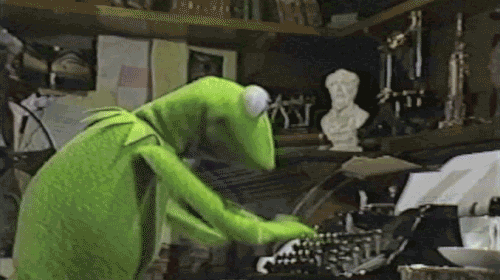
What I wish they taught me in GLAM School:
First, I wish there was a dedicated archivist degree
Archival software systems training – especially TRIM training which is often required for government positions
Appraisal sentencing and disposal experience
Familiarity and experience with applying Retention and Disposal Authorities, Public Record Office Victoria (PROV) standards
Basic preservation and conservation training for handling archival material, pest management, climate monitoring, rehousing archival material and disaster preparedness training by professional conservators
How to create effective finding aids and research guides
Hands on experience with archive collections
How to write policies and procedures
How to mentor students and volunteers
Research proposal writing skills
Journal article writing skills
How to peer review journal articles
How to write an abstract for a conference
For people working in GLAM front of house, I also think conflict management training should be part of every degree. It is certainly something that I know my public librarian colleagues are trained for on the job.
I also wish that the degree included a more practical approach to prepare graduates for job hunting:
Resume writing
What practical experience you need to have on your resume
Successful job application writing skills
Interview skills
Professional advice about volunteering
Your rights in the workplace
LinkedIn profile guidance
Social media training
When you land your dream job:
Be active in your workplace
Get to know your colleagues, not just in your department but across the organisation
Learn what others do in their jobs to better understand your organisation, and so that you can also develop your skills and better do your job
Attend as many professional development training sessions as possible
Read the intranet news and learn the history of the organisation, so that you know what’s going on in your organisation and can, with time, be an authority and advocate on behalf of your organisation internally and externally
Attend staff meetings - actively listen and contribute
Find a mentor, someone with the time to guide you
Importantly stay in touch with your student cohort – they will be your friends and support network for your career ahead
Now that your working, keep learning – lifelong learning is the key, so attend seminars, conferences, listen to podcasts and read blogs and articles, a lot, because the profession is growing and changing all the time, and you need to be part of the change, adapting to knew technologies and theories
Speak up in your organisation and GLAM community, don’t be apolitical – we have a responsibility to our communities
0 notes
Text
Democratisation in action
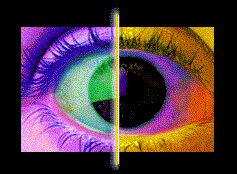
There is no political power without control of the archive, if not of memory. Effective democratisation can always be measured by this criterion: the participation in and the access to the archive, its constitution and its interpretation. - Jacques Derrida, Archive Fever, 1995
Control is vital in the world of GLAM. If control is lost, items are not registered in databases making them untrackable and unused. Library books never find their reader, knowledge in archives untapped, gallery collections locked away in stores never to be displayed, and museum objects go unnoticed and unstudied.
Museums Victoria has 17 million objects - can you imagine if museum workers lost total control, these objects and specimens are rendered meaningless without the metadata and systems that track them.
The Commonwealth Record Series (CRS) System is the archival control system the National Archives of Australia has used since the early 1960s to classify and control Commonwealth records. In the CRS Manual, the word control is used 61 times. Clearly control is important to archivists.
Although it’s important that archivists maintain control of the systems that ensure items are trackable and findable, it is also important that archivists enable access. Raising the profile of archival collections and awareness of the content available within collections provides more opportunities for individuals from diverse backgrounds to interpret archival material in new and interesting ways. This is democratisation in action.
Gone are the days of archivists acting as gatekeepers to these valuable collections. Archivists are the catalysts in this open access movement.
Communities are also demanding greater access to museum collections, both on display and back of house. Social media has played an important role in providing digital access to collections, and insights into the work of GLAM professionals and what goes on behind the scenes. Some GLAM institutions have embraced this new-found openness to their operations wholeheartedly.
One of my favourite examples of this is Tate’s Archives and Access project (2012 - 2017), made possible through a £1.9 million grant from the Heritage Lottery Fund. At the completion of this five-year project, 52,000 items from the Tate Archive have been digitised and published online. “The project also produced a suite of digital tools and resources that support discovery of the digitised collections. These include: the Albums feature, which allows users to collate and share collection pieces published on our website; Animating the Archives film series, which explores artists and themes inherent in the collections, and; AnnoTate, an online crowdsourcing transcription tool that invites audiences to transcribe text from the collections.” - http://www.tate.org.uk/about-us/projects/transforming-tate-britain-archives-access
Funding projects such as Tate’s Archives and Access project is vital if we are to follow Derrida’s philosophy about providing access to archives as a means of ‘effective democratisation’. Publishing digitised archive material and new content online, interpreting archive material in new ways, such as in Tate’s excellent Animating the Archives film series, allows anyone with access to the Internet to use this archive material that was once studied by the privileged few. This is democratisation in action.
This is just one example to illustrate my point, however I am excited and optimistic about the future of archives because of all the other excellent examples of archivists using control systems to make items findable, and sharing collections online, on websites and social media, so that diverse communities have greater access.
youtube
#GLAM Blog Club#glam#glamblogclub#GLAM geekery#AusGLAMBlog#archivist#control#digitisation#Tate Archive#access#democratisation
1 note
·
View note